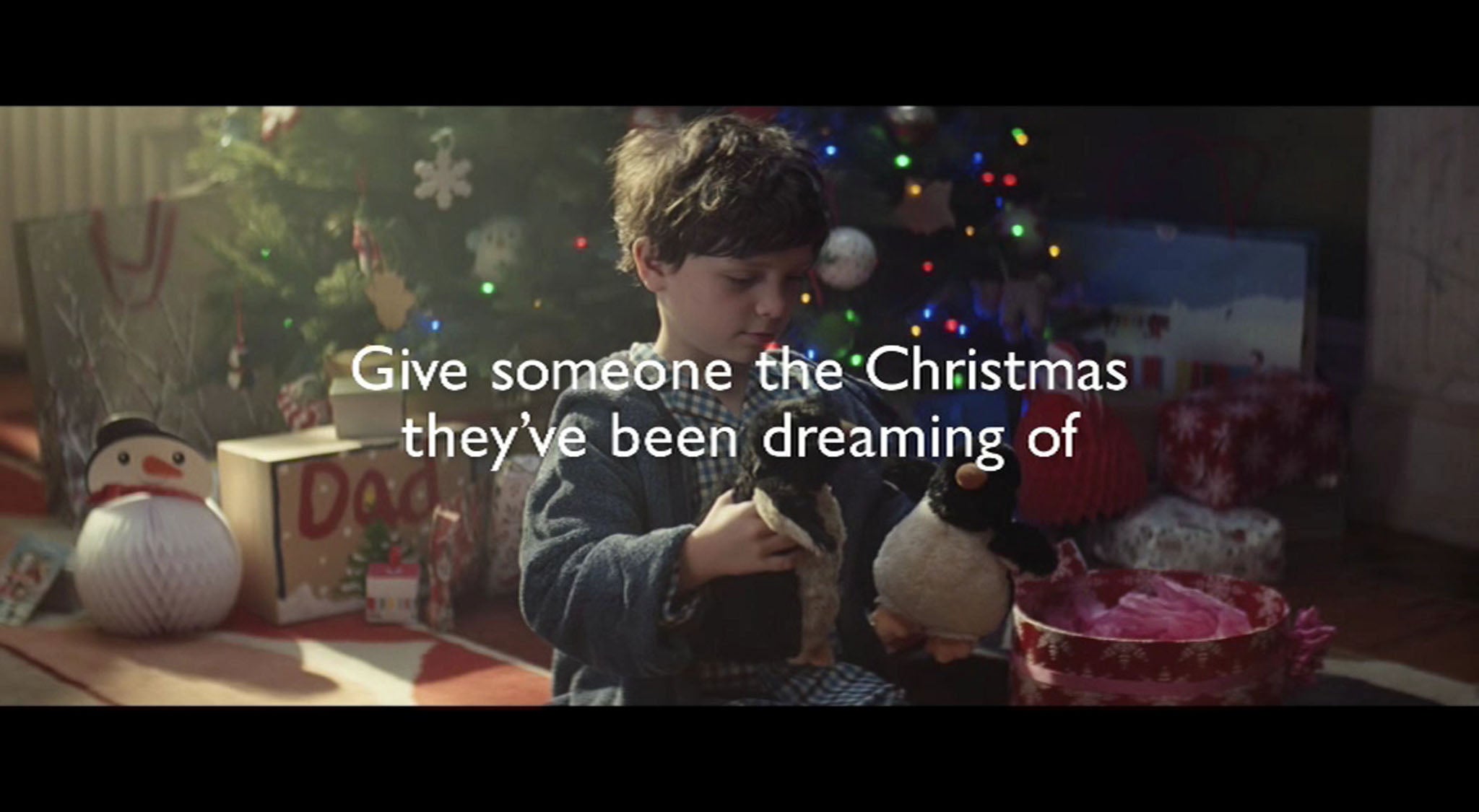Christmas adverts show big brands are ignoring LGBT individuals as a consumer group
Why not make a story that shows an expression of love in all forms: gay, lesbian, bisexual, transgender and straight

Alright, John Lewis, you got me. Like many other millions of people I was been enchanted by Monty The Penguin in your latest Christmas campaign. Yes, I cried. But after composing myself, something dawned on me. I turned to my boyfriend, and said: “Out of all the couples depicted, not one of them was same-sex.”
On Saturday 29 March 2014 the first marriages of same-sex couples in England and Wales finally took place. In this monumental year in the history of our equality I was surprised to see John Lewis, a company that attracts a diverse demographic, appearing to portray ‘real love’ as being between heterosexuals only. In the story, Monty forlornly watches a number of couples being romantic, which sparks a desire in him to want a partner of his own. We see a man and a woman kissing in an old black and white film, another man and a woman walking arm-in-arm across a snow covered park, and an elderly man and a woman sitting on an Oxford Street bench kissing. All three relationships presented in the advert are of the ‘traditional’ or ‘conventional’ form. They don’t represent the love that is also shared between gay, lesbian or bisexual people in same-sex relationships.
Even the two penguins are straight; with Monty’s partner given the gender-specific name of ‘Mabel’ in the store’s merchandise. I would have quite liked it if the two penguins were gay; after all, in the animal kingdom it is not uncommon to have two male penguins forming long lasting homosexual relationships.
If you include the child’s parents, then there are five instances of heterosexual relationships in an advert that runs for just 2 minutes and 11 seconds. Surely John Lewis doesn’t think that same-sex couples, penguin or otherwise, don’t experience ‘real love’? Was using only heterosexual couples a genuine oversight? Or was it a creative decision to avoid garnering unfavourable comments from those less tolerant in society?
I am not an LGBTQ crusading activist, but I do think that there needs to be a fairer representation of same-sex relationships in our adverts. The number of LGBT characters on television has risen dramatically over recent years, appearing in positive and prominent roles across all programme genres. Yet still in our ad-breaks there is an obvious avoidance from some of Britain’s biggest brands to associate themselves with gay, lesbian and bisexual people.
Why are advertisers largely ignoring LGBT individuals as a consumer group? After all it is estimated that nearly 1 in 16 consumers across Britain identify as gay, lesbian or bisexual; and according to a Stonewall report gay consumers are thought to be worth between £70-81 billion annually in Britain alone. Three in five gay, lesbian or bisexual people – that’s over two million British consumers – are more likely to buy products if they think a company is gay-friendly, and nearly half are more likely to buy products that use images of gay people to sell their products. These figures alone should strongly suggest to companies that boast a diverse customer-base, that LGBT individuals are part of a powerful and lucrative consumer group and should not be marginalised.
And whilst the likes of Ikea, Pepsi, and Lloyds TSB have featured LGBT individuals and couples in their adverts over the years, I am struggling to understand why a high-profile advert from Britain’s favourite department store – a story that could have seamlessly incorporated a depiction of a same-sex couple – overlooked, missed, or decided against portraying equality in such an important year and to a prominent consumer group. By including a mix of heterosexual and same-sex relationships in “Monty’s Christmas”, John Lewis would have created yet another inspiring moment within such a lauded campaign. And more importantly, they would have played a critical role in spreading a message of tolerance and acceptance at Christmas.
No doubt their thoughts will soon turn to Christmas 2015, so here’s a challenge. Make a story that shows an expression of love at Christmas in all forms: gay, lesbian, bisexual, transgender and straight. I am certain that if you get the creative right, you will remain the most talked about Christmas advert, for all the right reasons.
Join our commenting forum
Join thought-provoking conversations, follow other Independent readers and see their replies
Comments